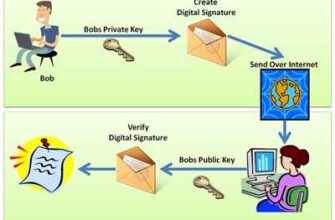
If you’re looking to create an app, you’re in luck! There are plenty of tools and frameworks available to help you build the perfect app for your needs. Whether you’re a seasoned developer or just starting out, there’s a solution for you. In this article, we’ll explore some of the reasons why you might want to create an app, the tools and frameworks you can use, and the different ways you can monetize your app.
One of the main reasons to create an app is that it allows you to reach a wider audience. With the prevalence of mobile devices, more and more people are using their phones and tablets to access information and services. By creating an app, you can provide a tailored experience for your users, making it easier for them to access your content and interact with your brand.
When it comes to creating an app, you have several options to choose from. One popular choice is to use a framework like React Native or Flutter. These frameworks allow you to write your app’s code once and then use it to create both iOS and Android versions of your app. This can save you time and effort, as you don’t have to write separate code for each platform.
If you don’t want to go down the framework route, there are also tools like Shoutem and Microsoft Power Apps that provide a drag-and-drop interface for creating apps. These tools are great for beginners or those who don’t have a lot of coding experience. They offer built-in templates and packages that you can use to quickly create your app, and they often provide extensive documentation and support.
Another option is to use a static site generator like Gatsby or Next.js. These tools allow you to create fast, scalable apps that are built using modern web technologies like React and Node.js. With a static site generator, you can easily create dynamic, single-page apps that load quickly and provide a seamless user experience.
Regardless of the tool or framework you choose, it’s important to plan ahead and consider the needs of your app. Think about the features you want to include, the data you need to store, and the ways you want to monetize your app. By making these decisions early on, you can ensure that your app is a success and that you’re able to deliver a great user experience.
How to create an app in 2023

In 2023, creating a mobile app has never been easier. With the right tools and frameworks, you can build a fast and feature-rich app that users will love. Whether you’re starting a new project or want to add features to an existing app, there are several ways to create an app that meets your needs.
If you’re looking for a simple and fast way to create a single-page app, HTML, CSS, and JavaScript are the go-to tools. You can use libraries such as React or Angular to build the UI, and Node.js for server-side development. These tools have a large community support and extensive documentation, making it easy to find solutions to any problems you may encounter.
For more complex apps that require advanced features and performance, you may want to consider using a framework such as Next.js or Gatsby. These frameworks offer built-in support for static site generation and server-side rendering, which can improve both the speed and SEO of your app. They also come with powerful data handling capabilities, allowing you to tailor your app to each user’s needs.
If you’re a fan of Microsoft tools, you can create an app using the Microsoft Power Apps platform. This platform provides a no-code, drag-and-drop app builder, making it easy for anyone to create a fully functional app. It also has built-in monetization options, allowing you to earn money from your app.
If you want to create a mobile app without writing a single line of code, you can use app builders such as Shoutem or AppInstitute. These tools provide a visual interface for creating apps, allowing you to customize the layout, design, and functionality without any coding knowledge. However, keep in mind that using app builders may limit your app’s customization options.
In 2023, the choice of tools for app development is vast. Whether you prefer to code from scratch or use pre-built packages, there is a solution that works for you. Just make sure to choose the tools that best suit your project’s requirements and your development skills.
Canvas apps
If you want to create a fast and tailored app for your users, canvas apps are a great choice. With canvas apps, you can create single-page websites or mobile apps using tools such as Microsoft Power Apps, React, or Node.js.
Canvas apps offer built-in support for data from existing libraries or packages, making it easy to work with data from an existing project. Whether you’re creating a new app or want to add canvas functionality to an existing app, canvas apps are a versatile tool.
One of the reasons why canvas apps are so popular is their open framework and the support they have from the development community. You can find a wide range of tools and toolchains that support canvas app development, such as Gatsby, Next.js, Parcel, and more.
When it comes to monetization, canvas apps offer several ways to generate revenue. You can include ads, in-app purchases, or even charge users for access to premium features. The choice is yours!
The canvas apps work by using HTML, CSS, and JavaScript to create a user interface that users can interact with. By using these web technologies, you can create visually appealing and interactive apps that run smoothly on different devices.
Whether you’re a developer or a non-technical person, canvas apps provide an easy and intuitive way to create apps. You can use drag-and-drop builders or code directly to customize the app to your liking.
Canvas apps are a great tool for creating apps that are tailored to your specific needs. They allow you to create fast and responsive apps that can be customized to display the exact data and features you want. No more dealing with unnecessary bloat or problems caused by an overly complex app.
In 2023, canvas apps are expected to continue growing in popularity. With their ease of use and ability to create dynamic and engaging apps, more and more developers and businesses are choosing canvas apps as their go-to solution.
So, whether you’re a developer looking to create a new app or enhance an existing one, consider using canvas apps. With the wide range of tools and support available, you’ll have everything you need to create the perfect app.
Create a New React App
When you want to create a new React app, there are several ways you can go about it depending on your needs and the tools you’re comfortable with. React is a popular JavaScript library for building user interfaces, and it offers a lot of flexibility and power for creating web and mobile apps.
If you’re just getting started with React and want a fast and easy way to create a new app, one option is to use create-react-app. This is a command-line tool that sets up a new React project with all the necessary configurations and dependencies, so you can start coding right away. It includes Babel for compiling modern JavaScript, Webpack for bundling your code, and a development server for live reloading.
If you’re already familiar with React and want more flexibility in configuring your project, you might consider using one of the other toolchains available. Some popular choices include Next.js, Gatsby, and Parcel. These frameworks offer additional features and optimizations tailored to specific use cases, such as static site generation, server-side rendering, or mobile app development.
If you’re interested in creating a mobile app, you can use frameworks like React Native or Shoutem. These tools allow you to build native apps using JavaScript and React, with built-in support for common app development tasks such as managing data, handling user input, and integrating with device features.
Another option is to use a builder tool like Microsoft’s Power Apps or Salesforce’s Lightning Platform, which provide drag-and-drop interfaces for building apps without writing any code. These tools often have built-in support for data integration, user authentication, and monetization, making them a good choice for creating simple apps quickly.
If you’re working on an existing project and just want to add React to a single page or a section of your app, you can use React in a similar way to other JavaScript libraries. You can include the React library and its dependencies in your HTML file, and then use the React.createElement function or JSX syntax to define your components and render them to the DOM.
Regardless of the method you choose, React offers a powerful and flexible way to create interactive and dynamic web and mobile apps. Its component-based architecture makes it easy to reuse code and separate concerns, while its virtual DOM and diffing algorithm ensure efficient rendering and updates. With the right tools and documentation, you can get up and running with React in no time and start building amazing apps.
Next.js: The React Framework
Next.js is a powerful React framework that provides developers with an easy and efficient way to create web applications. With its built-in support for server-side rendering, static site generation, and client-side rendering, Next.js offers the best of both worlds for website development.
One of the key reasons why Next.js has become a popular choice among developers is its seamless integration with React. By combining the power of React’s component-based architecture and Next.js’s framework, developers can build fast and responsive web apps.
Next.js also provides an excellent development experience, with its comprehensive documentation and beginner-friendly nature. Whether you’re a seasoned developer or just starting out, Next.js’s clear and concise documentation will guide you through the process of creating your app.
Another advantage of using Next.js is its excellent tooling support. With Next.js, you don’t have to worry about setting up complicated toolchains or dealing with problems such as parceling or bundling your app. Next.js takes care of all of that for you, so you can focus on building your app, not configuring your development environment.
Next.js also offers monetization options for your apps. If you want to make money from your Next.js apps, you can easily integrate advertisement banners or in-app purchases. This makes Next.js a great choice for developers who want to have a profitable app.
Next.js is also a great choice if you’re working on an existing React project. With Next.js, you can easily open your React app in Next.js and start using its features right away. This allows you to take advantage of Next.js’s powerful framework while still leveraging your existing codebase.
Next.js also provides a tailored experience for creating mobile apps. If you want to create a mobile app using Next.js, you can use Shoutem, a mobile app builder that works seamlessly with Next.js. Shoutem provides a wide range of tools and packages to help you create mobile apps that are fast, responsive, and easy to use.
Overall, Next.js is a powerful and versatile framework for creating web applications. Whether you’re a beginner or an experienced developer, you’ll find Next.js to be a valuable tool for building your apps. With its support for server-side rendering, static site generation, and client-side rendering, Next.js offers the flexibility and efficiency you need to create modern and responsive websites or mobile apps.
ShoutEm
ShoutEm is a mobile app builder that offers different ways to create and support your app project. It provides a canvas for creating your app and offers packages and support for various tools like Gatsby, Node.js, React, and more. ShoutEm works together with these existing toolchains to help you create a fast and user-friendly app.
One of the reasons you may choose ShoutEm is its built-in tools for monetization. You can easily monetize your app and earn revenue from it. ShoutEm provides tailored solutions for static and single-page apps, making it a versatile choice for your app development needs.
If you’re new to app development or want a quick and easy way to create an app, ShoutEm is a great choice. Its user-friendly interface and comprehensive documentation make it easy to get started. Whether you’re a beginner or an experienced developer, ShoutEm has the tools and support you need.
ShoutEm supports HTML, CSS, and JavaScript, so if you’ve worked with these technologies before, you’ll feel right at home. It also has support for popular libraries like React and Babel, making it easy to integrate your existing code into your ShoutEm app.
With ShoutEm, you can create both web and mobile apps. It offers support for tools like Next.js and Parcel, allowing you to create apps for a variety of platforms. Whether you want to create an app for iOS, Android, or the web, ShoutEm has you covered.
ShoutEm works on the principle of “write once, run anywhere,” meaning you can write your app code once and have it run on multiple platforms. This saves you time and effort, as you don’t have to build separate apps for each platform. ShoutEm takes care of the platform-specific code, so you can focus on creating an app that works well for all users.
ShoutEm also offers support for data integration, allowing you to easily connect your app to external data sources. Whether you want to display data from an API or pull in data from a database, ShoutEm has the tools and resources to help you do it.
In conclusion, ShoutEm is a powerful app development framework that offers a range of built-in tools and support for creating mobile and web apps. With its user-friendly interface, comprehensive documentation, and integration with popular libraries and tools, ShoutEm is a great choice for both beginners and experienced developers.









